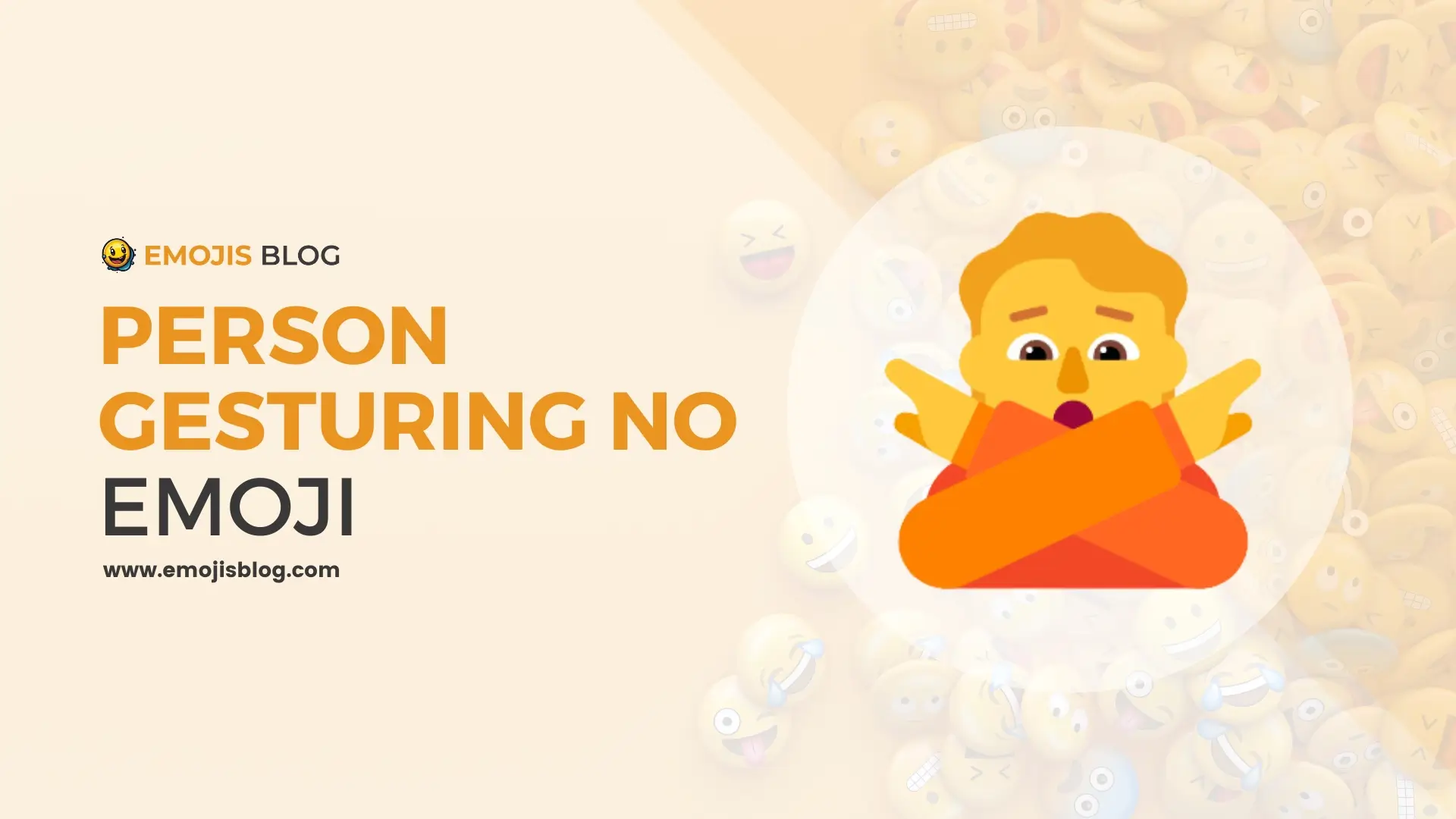What Does The Person Gesturing No Emoji Mean 🙅
🙅
Person Gesturing No Emoji Meanings 🙅
The “Person Gesturing No” emoji 🙅, depicts an individual with arms crossed in front of their chest forming an “X” shape, universally signifying negation, refusal, or prohibition. Introduced in Unicode 6.0, it is available in different gender and skin tone variations, allowing for personalized representation. This emoji is commonly used to decline invitations, express disagreement, or prohibit actions, and its visual consistency across platforms ensures that its meaning is widely understood, making it a powerful tool for clear and inclusive digital communication.
Technical Information
| Attribute | Details |
|---|---|
| Unicode Version | 6.0 |
| Unicode Code Point | U+1F645 |
| HTML Entity | 🙅 or 🙅 |
| Introduced | 2010 |
| Category | People & Body |
| Subcategory | Person Gesture |
| Variations | Gender and Skin Tone |
| Emoji Presentation | Yes (default text presentation: 🙅; emoji presentation: 🙅🏻) |
| Platforms Supported | iOS, Android, Windows, macOS, Linux, Web, etc. |
| Available Genders | Female, Male, Gender-neutral |
| Available Skin Tones | Light, Medium-Light, Medium, Medium-Dark, Dark |
Understanding the Person Gesturing No Emoji 🙅
Emojis have become an integral part of digital communication, allowing users to convey emotions, reactions, and gestures succinctly. One such emoji is the “Person Gesturing No” emoji, represented as 🙅. This emoji depicts a person with crossed arms, typically used to indicate a strong “no” or rejection. This article explores the origins, uses, variations, and cultural significance of the “Person Gesturing No” emoji.
Origins and Design
Creation and Inclusion in Unicode
The “Person Gesturing No” emoji was introduced as part of Unicode 6.0 in 2010. Unicode is a standardized system for encoding, representing, and handling text expressed in most of the world’s writing systems. Emojis are a subset of this system, ensuring consistency across different platforms and devices.
Visual Representation
The emoji features a person with arms crossed in front of their chest, forming an “X” shape. This gesture universally signifies negation, refusal, or prohibition. The default design typically shows a female character, but variations exist to include male and gender-neutral representations.
Variations Across Platforms
Gender and Skin Tone Options
With the release of Unicode 7.0, users gained the ability to select different skin tones for most emojis, including the “Person Gesturing No.” This inclusivity allows for better representation and personalization in digital communication. Additionally, users can choose from female, male, and gender-neutral versions of the emoji, ensuring that everyone can express themselves accurately.
Platform Differences
The appearance of the “Person Gesturing No” emoji can vary slightly depending on the platform or device. For example, Apple’s version might differ from Google’s or Microsoft’s in terms of design details like facial expression, clothing, and color scheme. Despite these variations, the core gesture remains the same, ensuring that the emoji’s meaning is universally understood.
Usage and Meaning
Indicating Refusal or Denial
The primary use of the “Person Gesturing No” emoji is to indicate refusal, denial, or prohibition. It can be used in various contexts, such as:
- Declining an invitation: “I can’t make it to the party 🙅.”
- Expressing disagreement: “That’s not true 🙅.”
- Prohibiting an action: “No smoking in this area 🙅.”
Emphasizing Strong Emotions
The emoji can also convey strong emotions like frustration, annoyance, or anger. In these cases, it adds emphasis to the message, making it clear that the sender feels strongly about the subject.
Cultural and Social Contexts
In some cultures, the gesture of crossed arms may have additional meanings. For example, in Japan, it is commonly used to indicate that something is forbidden or unavailable. This cultural nuance can add layers of meaning to the emoji depending on the context in which it is used.
Cultural Significance
Global Recognition
One of the strengths of emojis is their ability to transcend language barriers. The “Person Gesturing No” emoji is a prime example of this, as the gesture of crossed arms is widely recognized around the world. This makes it a powerful tool for communication in our increasingly globalized society.
Representation and Inclusivity
The availability of gender and skin tone variations for the “Person Gesturing No” emoji highlights the importance of representation in digital communication. By allowing users to choose an emoji that reflects their identity, Unicode promotes inclusivity and ensures that everyone can find an emoji that resonates with them.
Conclusion
The “Person Gesturing No” emoji 🙅 is a versatile and widely recognized symbol of refusal, denial, and prohibition. Its origins in Unicode, variations across platforms, and cultural significance make it an essential part of digital communication. Whether you’re expressing a strong “no” or emphasizing your disagreement, the “Person Gesturing No” emoji is a powerful tool for conveying your message effectively.

